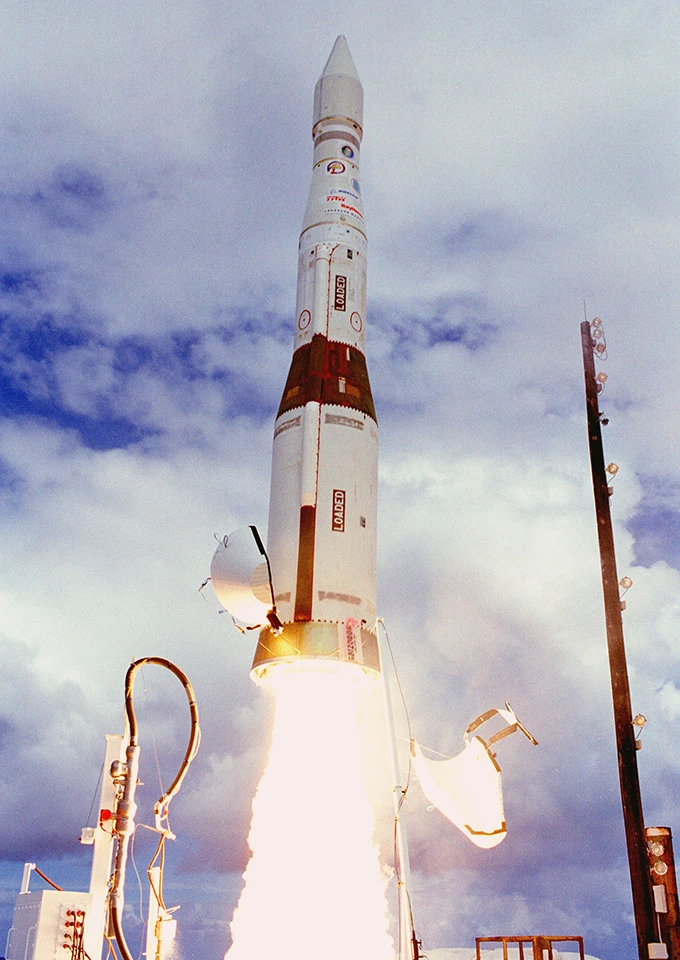Boeing, in conjunction with the US Missile Defense Agency (MDA), has completed a successful demonstration of a new, advanced interceptor capability for the Ground-based Midcourse Defense (GMD) system that allows ICBMs to be destroyed in space earlier.
The task of an anti-ballistic missile system has been described as hitting a bullet with a bullet. In some ways, it's an apt analogy because the GMD system destroys its target by smashing an Exoatmospheric Kill Vehicle (EKV) into an incoming ballistic missile at a combined hypersonic speed so fast that no explosives are needed to finish the job.
However, the job of the GMD is more complex than that. Using a network of ground-based radar, early warning radar, and land- and sea-based X-band radars, the system has to detect, track and calculate the optimum trajectory for intercepting the hostile missile in space with the greatest chance of success, and then guide the interceptor to its target.
This is made even more difficult because an enemy is hardly likely to cooperate by launching an attack in a nice, predictable fashion. As a result, the GMD has to have a large degree of flexibility built in, with one missile being able to handle a wide variety of targets.

Currently, the United States has 44 interceptor missiles based at Fort Greely, Alaska, and Vandenberg Space Force Base, California, with another 64 on order. These aren't designed to handle something like a massive Russian nuclear attack, though they could introduce a serious element of doubt in the attacker's mind. Instead, their primary mission is to protect the US from accidental launches or attacks by rogue states like North Korea.
The GMD system is rated to have a 56 percent chance of taking out a missile with a single shot and a 97 percent chance of success with a salvo of four interceptors. Because the interceptors are a standard three-stage design, Boeing has been working with the US Defense Department to make the missiles more flexible so that they can intercept an incoming threat earlier in the launch timeline.
Using digital system modeling software upgrades, interceptor operators can now choose in real-time a conventional three-stage launch, or program the missile to act like a two-stage booster. This isn't simply a matter of not firing the third stage, but also of altering the flight profile and determining when to release the kill vehicle.
When mature, the new capability will be included in the interceptors as part of the MDA’s Service Life Extension Program.
"The GMD system is reliable and ready if called upon to defend the nation," says Debbie Barnett, Boeing GMD vice president and program director. “For more than 20 years, Boeing has led the development, integration and maintenance of this system. We’re proud to continue these efforts for the fielded GMD system to ensure the continued defense of the United States for years to come."
Source: Boeing





